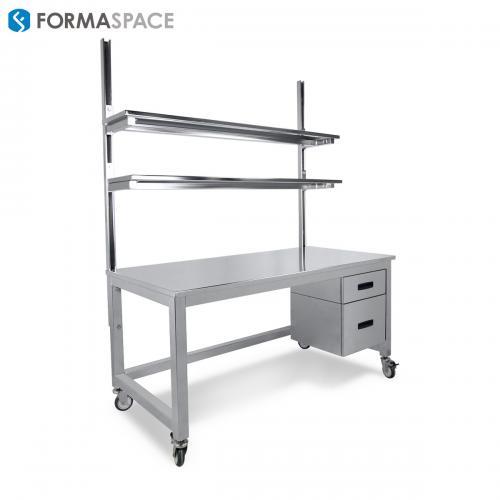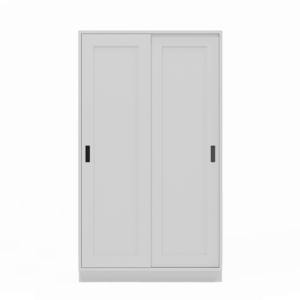In this article, we’ll take a detailed look at the key principles in the design and specification of biosafety cabinets, laminar flow cabinets, and fume hoods with the goal of helping to establish a basic foundation in the understanding how each of these different types of equipment work and under which circumstances they are well suited for a particular set of operations in the lab.
Of course, it goes without saying that the final specifications for this type of equipment need to be made in partnership with your lab’s Chief Safety Officer (CSO) as well as engineering or technical specialists familiar with the equipment manufacturer’s products, the detailed specifications of the HVAC system in your lab, all applicable workplace health and safety regulations for the type of lab work you are undertaking, as well as the governing regulations covering exposures to chemicals or biohazards from agencies such as OSHA (or Cal OSHA in California), the FDA, NIOSH, the NSF, WHO, or other relevant bodies that govern your specific application. And while we’re on the topic of disclaimers, this article will not cover specialty lab cabinet selection for use with radiological materials; we’ll address that at a later time.
Understanding the Full Spectrum of Biosafety Cabinet Solutions – from Laminar Flow Cabinets to Biosafety Cabinets to Fume Hoods.
You often hear these three terms used somewhat interchangeably: laminar flow cabinets, biosafety cabinets (BSCs), and fume hoods.
The confusion is understandable – first, because they all look somewhat similar to the untrained eye, and second, they all rely on fast-moving air to get the job done.
The difference lies in the details.
While many cabinets look the same, their operation (as well as the objectives they are trying to achieve) can be quite different – thus, it can be dangerous to assume that, for example, a laminar flow cabinet can protect you from toxic fumes or biohazards. By design, it cannot.
Let’s start by taking a look at the role and function of laminar flow cabinets, then we will contrast that with an extreme example of the other end of the spectrum, glovebox-type biosafety cabinet (BSC) found in a high-security BSL level-4 laboratory. Then we’ll come back to fume hoods, which are designed to protect users from exposure to toxic chemical fumes.
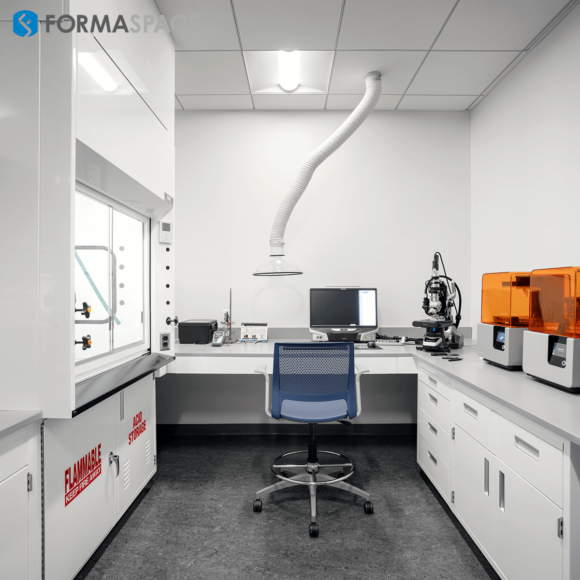
Laminar Flow Cabinets: Protecting the Product/Sample from Contamination
Category and Class/Type: Laminar Flow Cabinets, Vertical or Horizontal
Let’s start by looking at laminar flow cabinets because they’re the simplest category from a human safety requirements standpoint. Why? Laminar flow cabinets are designed to protect the product (whether it’s a semiconductor chip, a non-toxic tissue sample, or a non-toxic pharma compound) from contamination. And by contamination, we usually mean human contamination, such as dust particles spread from clothing, dander from skin, stray human hairs, etc.
In other words, laminar flow cabinets DO NOT protect the human lab worker; thus, their use in a lab setting is limited to entirely working with non-toxic materials only.
You’ll often find laminar flow cabinets located inside cleanroom environments, for example, in semiconductor manufacturing labs or in some USP 797 Non-Hazardous Drug Compounding operations.
· Human Health Protection: None
· Product/Sample Protection: Maintain a particle-free, sterile work zone
· Lab Setting: Often used within a larger cleanroom setting (with positive or negative air pressure, depending on requirements).
How do laminar airflow cabinets work? Typically, air is drawn into the cabinet via a fan, where it passes through a HEPA filter to remove any particles. The particle-free air is blown across the work zone in a straight line, e.g. in a laminar air stream, at a rate of 80 – 100 fpm.
The direction of the airflow can come from above, blowing straight down onto the product/sample (this type is called a vertical laminar flow cabinet); or the laminar airflow can originate in the back of the unit blowing across the product/sample into the face of the operator (this type is called a horizontal laminar flow cabinet).
Vertical flow designs are more suitable for manipulating large objects in the work zone as the airflow does not get blocked as easily by the object; however, horizontal flow cabinets work well for small items (such as semiconductors), which can be positioned at the back of the work zone closest to the continuous flow of clean air.
· Input Air Source: Intake of ambient room air from a grill in the top of the unit
· Filtration Protection: Air is processed through a HEPA filter to eliminate particulates landing on the product/sample; however, the air is then blown out of the cabinet after touching the product/sample, providing no additional protection for the worker
· Exhaust Air Output: Air exits via front of the open cabinet and recirculates back into the room
· Work Zone Protected Areas: Best locations are in the center for vertical laminar flow cabinets, in the back for horizontal laminar flow cabinets.
BSL Level 4 Glovebox Biosafety Cabinet (Class III BSC)
As mentioned earlier, we’ll contrast the simplicity of the laminar flow cabinet with one of the most highly regulated units, a Glovebox Biosafety Cabinet (BSC) used in a Level 4 Biosafety Laboratory (BSL-4), which is built to handle extremely dangerous biohazards, such as the ebola virus.
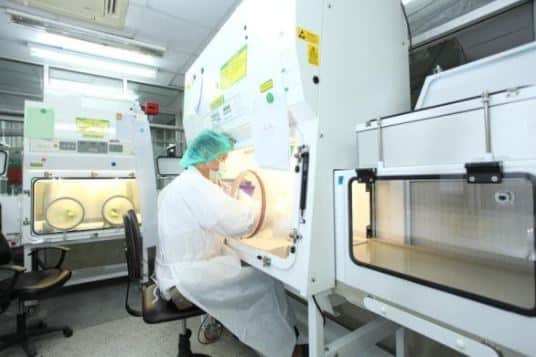
Unlike laminar flow cabinets, whose primary function is to maintain a sterile environment for handling products or sample specimens, the primary function of any class of biosafety cabinets is protect the human lab workers from exposure to biohazards, including bacteria, viruses, fungus, etc.
You probably already have a good image in your mind of the glovebox biosafety cabinet design. A worker typically dons a white containment suit and enters a special BSL-4 cleanroom to work at a sealed, glass-fronted cabinet fitted with two armholes mounted with internal rubber gloves.
· Human Health Protection: Protect lab workers from biohazards
· Product/Sample Protection: Maintain a particle-free, sterile work zone
· Lab Setting: Used within a highly regulated cleanroom setting, with operators wearing full protection suits. Air pressure is controlled to ensure contaminated air exits the room.
The lab operator slides his hands into the gloves, allowing him or her to manipulate dangerous products or samples within the cabinet without having any direct contact with the air contained inside. The air entering the cabinet is HEPA-filtered on the way in. The contaminated exhaust air is HEPA-filtered twice on the way out then hard ducted directly through the roof to vent into the outdoors. (In some cases, an incinerator is used instead of the second HEPA exhaust filter.)
· Input Air Source: Intake of ambient room air from a grill in the top of the unit
· Filtration Protection: Air is processed through a HEPA filter to eliminate particulates on the way into the cabinet
· Exhaust Air Output: Air exits the top of the unit and passes through two HEPA filters (or one HEPA filter and an incinerator) and is exhausted to the outside via a hard ducted connection
· Work Zone Protected Areas: Best locations are directly under the air source flowing into the cabinet, typically toward the front of the cabinet.
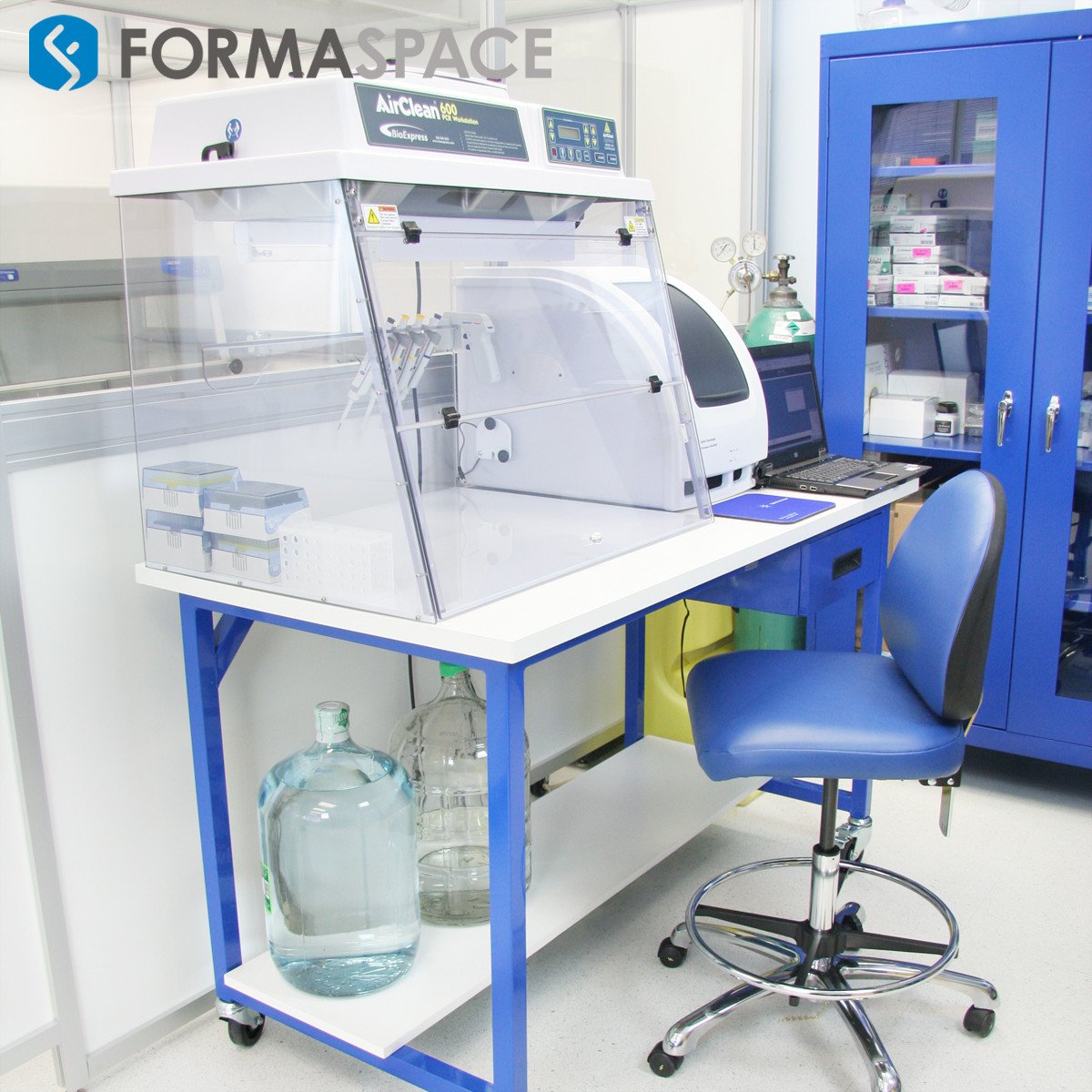
While we’ve discussed a Class III glovebox biosafety cabinet above, there are two other classes of biosafety cabinets available. Let’s take a look at these now.
Class I BSC
Unlike Class III BSCs gloveboxes, where the user reaches into the work zone through sealed gloves built into the unit, Class I and Class II BSCs use an open front design, accessed through a transparent window-sash style opening that can be kept closed when not in use. The air pressure inside the cabinet is negative, so air flows away from the operator into the unit.
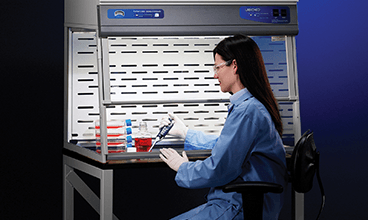
However, our first example, the Class I BSC, is an older specification that’s generally now considered obsolete for hands-on lab work as it does not offer product/sample protection (e.g. there is no HEPA filtration for the air entering the cabinet). Despite this, you can still often find Class I BSCs used in many BSL 1, 2, or 3 labs to house other lab equipment that’s in use, such as centrifuges.
Overview of Class II BSC
Class II BSCs are the most commonly used cabinets in BSL 1, 2, or 3 laboratories.
Unlike Class I BSCs, they DO provide biohazard protection for workers (the exhaust air is HEPA filtered) as well as provide protection for the products/samples in the work zone against contamination (the air drawn into the unit is also HEPA-filtered to create a laminar airflow over the work zone).
Class II units are broken down into five subcategories (Type A1, Type A2, Type B1, Type B2, and Type C1), depending on the duct configuration, speed of the airflow, the filtration systems used, as well as the percentage of air recirculated into the room, if any, and whether they recirculate exhaust air into the room or duct it to the outside.
Class II Type A1 BSC
Air is drawn at 75 fpm into the Class II Type A cabinet through the bottom of the front sash opening, where it joins the contaminated air at the bottom of the work zone. The air travels up the back of the cabinet in a positively pressurized plenum where it is 70% is HEPA-filtered and directed back down into the cabinet. The remaining 30% is filtered by a second HEPA filter and (depending on requirements) is either recirculated back into the room or is ducted to the outside by a thimble canopy.
(A thimble canopy, sometimes called a duct collar connection, is a piece of ductwork that is wider at the bottom and narrower at the top, like a thimble. On a BSC, the wide portion enclosures the entire exhaust grill located on the top of the cabinet, transitioning into a standard round cross-section duct that is suitable for passing up into the ceiling and through the roof.)
However, there are safety concerns with Class II Type A cabinets. Because it uses a positive pressure plenum that could, if damaged, leak dangerous aerosols into the ambient air, Class II Type A1 cabinets are now considered obsolete in favor of Type A2 cabinets (described next), which use a negative pressure plenum (which, if it should leak, would draw any contaminated air back into the plenum for filtration).
Class II Type A2 BSC
You can think of type Class II Type A2 biosafety cabinets as the next-generation version of the Type A1, and it’s the most commonly used type of BSC in labs today. The air inflow is faster, at 100 fpm, and the plenum at the bottom that collects a mixture of room air and contaminated air from the work zone is held under negative pressure, solving the safety issue created by Type A1 units, which had the potential for contaminated air leaks mentioned above. Like Type A1 cabinets, 70% of the air in Type A2 cabinets is filtered through the supply HEPA filter and sent downward as a stream of laminar airflow into the cabinet work zone area, while 30% of the air is filtered through the exhaust HEPA filter and either recirculated back into the room or is ducted to the outside by a thimble canopy, depending on applicable use and governing regulations.
Class II Type B1 BSC
As with Class II Type A2 cabinets, the air enters the cabinet of a Type B1 cabinet at 100 fpm.
And just like all Type A cabinets, 70% of the air in Type B1 cabinets is filtered through the supply HEPA filter and sent downward as a stream of laminar airflow into the cabinet work zone area, while 30% of the air is filtered through the exhaust HEPA filter.
However, unlike Type A cabinets, Type B1 biosafety cabinets must be hard ducted to an external exhaust blower mounted on the roof.
Because of the external exhaust system, Class II Type B1 cabinets are suitable for working with minute quantities of toxic chemicals as long as the product/sample is positioned in the rear portion of the work zone, closest to the air exhaust. (This area has the highest amount of air exhausted to the outside.) This gives Type B1 cabinets an advantage over Class II Type A1 and A2 cabinets which CANNOT be used with even minute quantities of toxic chemicals.
NOTE 1: Because 70% of the air is recirculated in a Type B1 BSC, minute amounts of toxic chemicals can still be recirculated back onto the product/specimen; if this interferes with the current lab process in use, then an upgrade to another type of cabinet, such as a Class II Type B2, is recommended, which does not recirculate the air.
NOTE 2: We will talk about chemical concentrations and Lower Explosive Limit (LEL) of chemical compounds in the section on fume hoods below, but operators using Class II Type B1, B2, or C1 BSCs must never let the chemical concentration in the cabinet rise to the Lower Explosive Limit (LEL) of the compound; otherwise there is an imminent risk of a potentially fatal explosion.
NOTE 2: The air pressure in a Class II Type B1, B2, or C1 BSC is not self-balancing, so the external blower must be operational to generate negative pressure inflow into the cabinet. Some installations also call for a scrubbing system to further clean the exhaust air before it exits the ductwork on the roof.
Class II Type B2 BSC
The primary difference between a Class II Type B1 biosafety cabinet and a Type B2 is that the latter does not recirculate HEPA-filtered air back into the room; all exhaust air is hard ducted to the outside in Type B2 BSCs.
The first advantage of this approach is that it allows the operator to use moderate amounts of volatile toxic chemicals inside the biosafety cabinet – subject to the same requirement that the chemical concentration in the cabinet rise must stay well below the Lower Explosive Limits of the compound.
Second, all the filtered air entering the workflow area is fresh, so there is less chance that recirculated toxic chemicals could interfere with sensitive lab operations on the product/sample.
And third, 100% external exhaust air provides an additional margin of safety (for example, if the HEPA filters are not doing their job).
However, there are disadvantages.
It can be difficult to maintain air balance in the cabinet due to the complexity of having to coordinate with a remote exhaust blower located in the roof.
The initial installation and configuration of an external duct and fan mounted in the room is also more complex (and expensive) than BSC systems that recirculate filtered air back into the room.
And finally, the operational costs are significantly higher, as you are in effect “airconditioning the outside.” In other words, with 100% of the exhaust air exiting the room, the laboratory’s HVAC system has to treat and condition “make up” air to replace what is removed. This can result in an annual energy use in the thousands of kilowatt hours per cabinet if they are kept running continuously. (NOTE: modern electric blower motors can help reduce energy usage, so this should be part of your specification analysis.)
Class II Type C1 BSC
While the letter C was most likely chosen because it’s the next letter in the alphabet, it’s easy to associate the words “combination” or “configurable” with Class II Type C1 biosafety cabinets – as that’s exactly what they offer, a combination of Type B1 and Type B2 features that can be configured to operate as one or the other.
The benefit of this is that Type C1 cabinets can operate at reduced energy consumption (by recirculating conditioned air back into the room) when you only require the capabilities of a Type B1 unit, or they can be switched over to emulate a Class II Type B2 unit when, for example, you need to work with higher volumes of toxic chemicals or some other process that requires 100% exhaust dispersal through ducting to the roof.
Fume Hoods
Now let’s set aside Biosafety cabinets for a moment and address the question of what to do if you do work with hazardous chemicals.
The first step in this case may be a bit unexpected. It’s always a good idea to start by investigating the possibility of using safer chemical substitutes, e.g. ones that are less toxic in the first place. This can make your lab safer and may allow you to use a different class of cabinet with a smaller initial investment and lower ongoing operating costs.
Next, you should ask yourself if there are any biohazards involved, such as bacteria, viruses, etc.; if so, refer back to the previous section on Biosafety cabinets to identify a suitable cabinet (such ones from Class II Type B1, B2, and C1, or Class III) that will also satisfy your requirement for working with toxic chemicals.
Third, you should determine whether the product or specimen you will be handling in the work zone needs protection from contamination, e.g. needs to remain sterile. If so, you can specify a ductless fume hood (described below) with added HEPA filters, or you may prefer to specify one of the Biosafety cabinets as Class II B1, B2, and C1, or Class III BSCs (described previously), which treat the source air with HEPA filters before blowing it onto the work surface and then venting the contaminated air to the outside.
And finally, while you may be tempted to think about using a Laminar Flow cabinet in this circumstance (because it offers product/specimen protection) instead of a fume hood, we must remind you that you should never use a Laminar Flow Cabinet to work with toxic chemicals under any circumstances! As you will recall, these units protect the product/specimen by blowing air toward the operator’s face, which is exactly what you don’t want to happen with dangerous chemical fumes.
Category and Class/Type: Fume Hoods, Ducted or Unducted
Now let’s go into more detail about the selection of appropriate Fume Cabinets in the laboratory.
As we mentioned at the beginning, it’s easy to confuse the category and class of cabinets at first glance.
Most fume hood cabinets feature a window sash that opens in the front, which gives them a similar appearance to many of the laminar flow cabinets or biosafety cabinets models (except for the distinctive glovebox BSCs).
But the role of a fume hood is different. Their primary function is to protect the user from chemical vapors by drawing in air from the front of the cabinet (away from the user’s face) and then either immediately exhausting it outside (in the case of ducted fume hoods) or thoroughly filter it through one of more specialty carbon chemical filters before recycling the air into the room (ductless fume hoods).
· Human Health Protection: Draws chemical vapors away into cabinet away from the user. In the case of ductless fume hoods, the recycled air is filtered in one or more specialty carbon filters targeting different chemical types.
· Product/Sample Protection: Ductless fume hoods do not filter air, thus cannot guarantee a particle-free, sterile work zone. To provide that, choose a ductless fume hood with an added HEPA air supply filter, or specify a Biosafety cabinet capable of handling the chemical vapor load of your application.
· Lab Setting: Fume hoods are often located within rooms that have controlled positive air pressure to assist the fume hood in drawing fumes away from the user.
Which fume hood type should you choose, ducted or ductless?
The pros and cons are similar to those of Biosafety cabinets (see above).
Ducted fume hoods have more capacity to deal with larger volumes or complex combinations of toxic chemical fumes.
On the other hand, ducted fume hoods require a bigger investment to install the ducting through the ceiling and a blower system on the roof. Energy usage with ducted units is significantly higher, too, as the air volume lost to the external duct must be replaced with more are conditioned by the HVAC system, which costs money.
· Input Air Source: Intake of ambient room air from window sash in front of the fume hood cabinet
· Filtration Protection: Ducted fume hoods do not filter the air; all exhaust air is hard ducted up through the roof for release in the atmosphere. Ductless fume hoods use one or more specially designed charcoal filters to remove toxic fumes; optionally, some ductless fume hoods also clean the air flowing over the product/specimen with an additional HEPA filter (used in clean rooms, for example).
· Exhaust Air Output: Ductless fume hoods filter the air (see filtration section above) and recirculate the air back into the room. Ducted fume hoods do not filter the air, all exhaust air is hard ducted up through the roof for release outside.
But there are also some significant issues with ductless fume hoods.
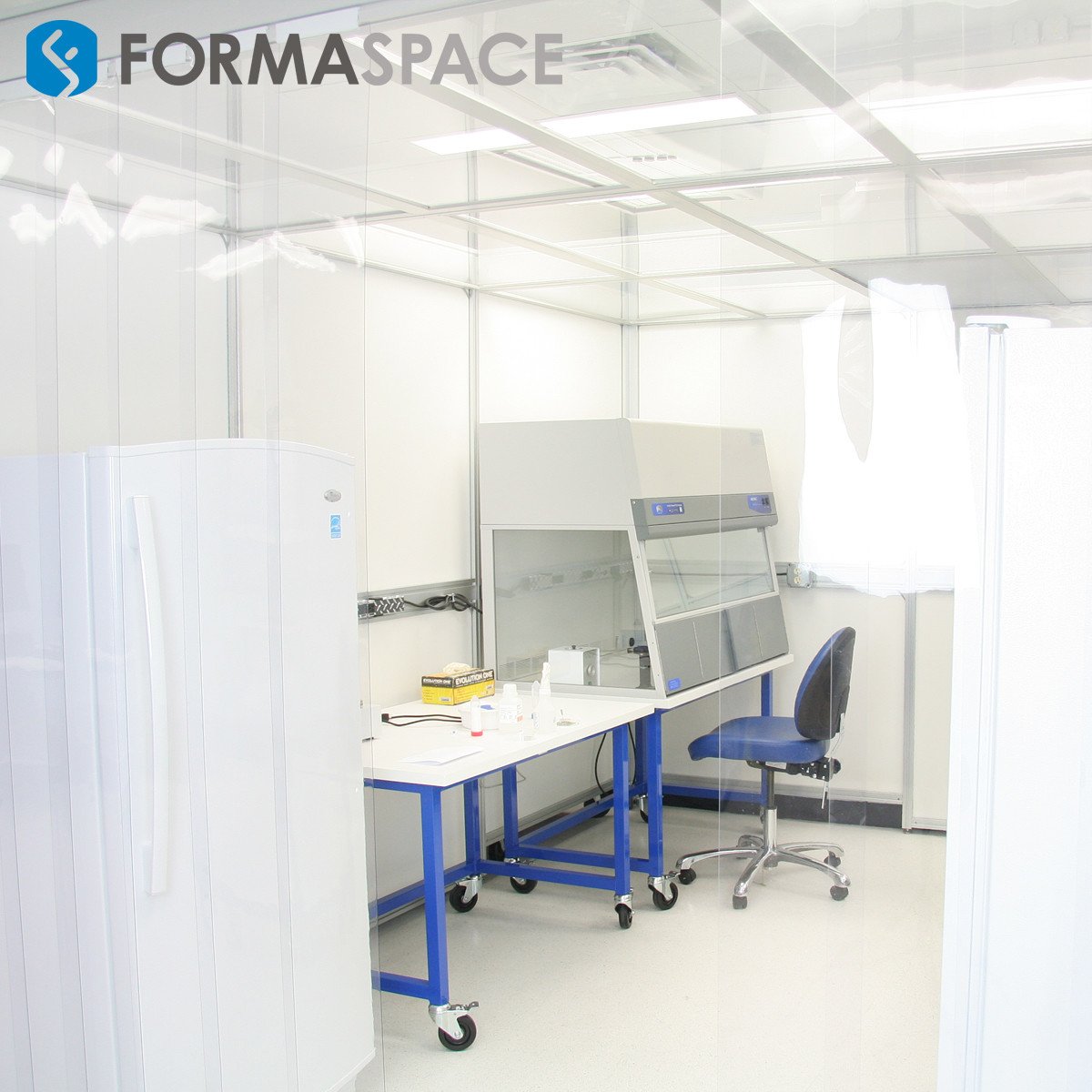
Although ductless fume hoods support a wide variety of carbon filters (including standard filters for basic organic compounds, acid filters, mercury compound filters, sulfur compound filters, halogen compound filters, aldehyde filters, and ammonia / amines filters), you may find it difficult to address your specific needs should you require more filters than your fume hood can support. (Generally, ductless fume hoods support one carbon filter, but some can support two.) If the available filters can’t meet your needs, then look at ducted fume hood solutions.
In addition, it’s important to conduct regular safety inspections with certified gas detection systems to assure that the filters are working properly in accordance with applicable regulations, such as OSHA guidelines for exposure to chemical hazards and toxic substances.
Adhering to proper safety practices is critical for fume hood operation in general, whether you are using a ducted or ductless system.
Take measures to prevent explosions seriously, and check and maintain safety equipment close at hand, such as fire extinguishers, eye wash stations, emergency showers, and chemical vapor test equipment.
Never use the fume hood as a storage area for chemicals.
And remember – under no circumstances should the chemical concentration in and around the fume hood be allowed to approach the Lower Explosive Limit (LEL) of the compound; otherwise, there is an imminent risk of a potentially fatal explosion.
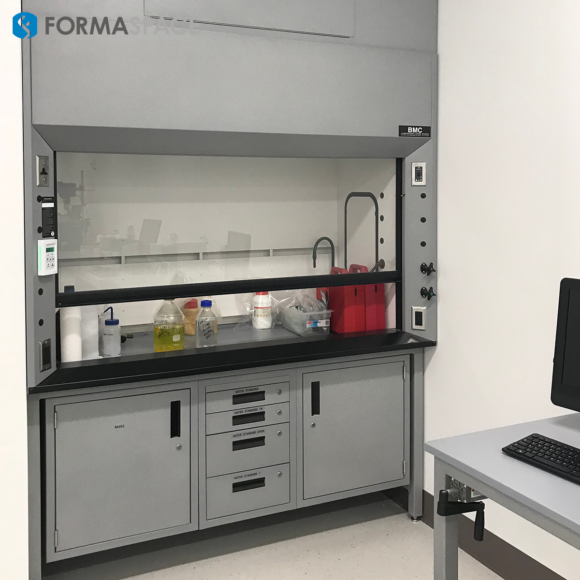
Formaspace is Your Laboratory Furniture Partner
If you can imagine it, we can build it.
We build custom furniture for commercial and government labs, pharma and healthcare labs, as well as private and public research laboratories here at our factory headquarters in Austin, Texas, using parts and materials sourced from American manufacturers.
And when it comes time to place a government order, you’ll find out products listed on the GSA schedule or through TIPS.
It’s time to take the next step.
Talk to your Formaspace Design Consultant today and find out how we can work together to make your next laboratory project a success.



